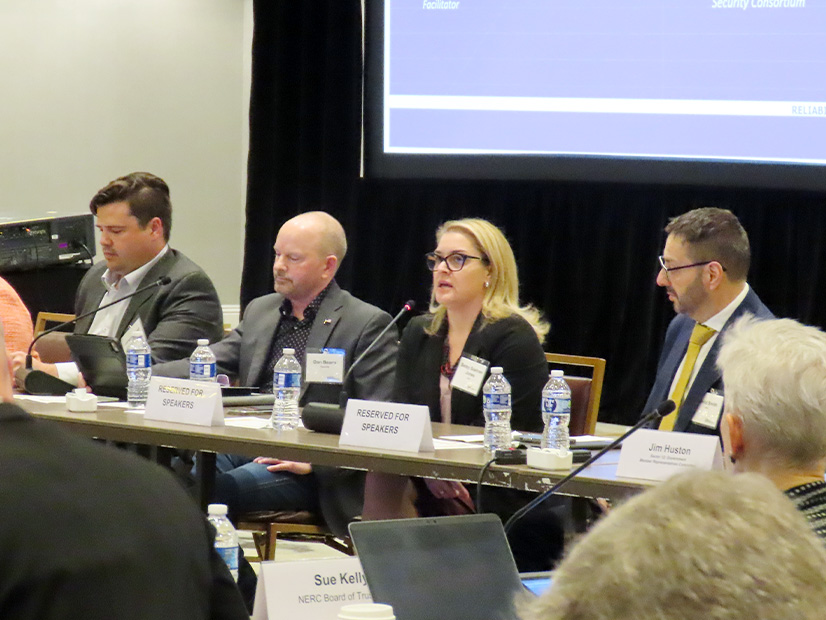
MIAMI — For Dan Beans, CEO of Roseville Electric Utility in California, the disruptions brought by the COVID-19 pandemic taught some hard truths about the resiliency of the global supply chains on which companies like his rely for essential materials.
“We have learned several lessons. One of them is: No one’s coming to save you,” Beans said during a panel on supply chain issues at NERC’s quarterly technical session during the Board of Trustees and Member Representatives Committee meetings in Miami.
“And what I mean by that is mutual aid. We’ve always done a really good job with that, but when it comes down to what do I have to hold back from my customers during the supply chain crisis, and what can I give to [neighbors], it makes it hard. So mutual aid is definitely at risk with a supply chain situation as dire as this,” he said.
Beans said the pandemic-induced supply issues caused Roseville Electric’s inventory practices and project timelines to go “out the window” and that even after switching from a one-year procurement cycle to three years, the utility still has not been able to rebuild its inventory of spare parts, with more than 200 transformers on order since 2022. The city’s growing population has added to the pressure by creating demand for housing.
Roseville Electric has been able to address the transformer shortage by finding a supplier based in South Korea, which Beans said has provided good equipment. But he worried that trade tensions might create new problems for his utility and others.
“I don’t know that the policymakers understand this,” Beans said. “Transformers aren’t toilet paper; this is not going to be at Costco next week. This is going to take a lot of time, [and there are] a lot of different knobs to turn. We need some immediate action, and some long-term action.”
The electric sector is not the only industry experiencing supply chain issues in recent years, according to Betsy Soehren Jones, executive director of the Critical Infrastructure Security Consortium, which works on behalf of electric, gas, oil, transportation, water asset owners and business organizations to protect supply chains and suppliers from cybersecurity and other risks.
Focusing on the challenge of software provenance and cyber vulnerabilities, she suggested utilities could learn from the experiences of peers in the automotive industry.
“What they did was, they pulled all of their major suppliers into a room, and they sat down and said, ‘These are our expectations, these are the threats, these are the risks that we see as an industry,’” Soehren Jones said. “‘We need to figure out a better way, between all of us, to get the software bill of materials standardized. … We need to know what’s inside of things. We need to understand where are you sourcing your materials? … Because at the end of the day, we are the ones that are responsible for selling that product to the market.’”
Soehren Jones said manufacturers and their suppliers set up a “standardized library of information” that allowed suppliers to continue innovating in their products while manufacturers could stay abreast of major updates, and suggested that a similar approach could keep utilities from stifling innovation among their vendors.
She added that the U.S. Defense Department’s Defense Innovation Unit (DIU) could serve as a model for the electric industry. DIUs were created in 2015 to help technology startups enter the DOD market and adapt to the department’s procurement regulations.
Jeremy Rand, vice president of procurement at Arevon Energy, joked that product sourcing has given him his “first five gray hairs” over the past three years. He admitted that utilities “don’t understand … where our products are sourced from” as well as they should.
Rand said the silver lining of the pandemic and other trade disruptions was that it forced the industry to take a hard look at these issues and start to identify areas for improvement. However, he emphasized that utilities are still in the process of fully understanding the problems they face.
“We definitely are learning much more in depth, and there is much better communication with those vendors than there ever has been to get down to those suppliers and understand how [they] are affected [by] tariffs [and other] disruptions … and how that synergy between all of them comes together so we can understand the risk profile of our projects,” Rand said.


